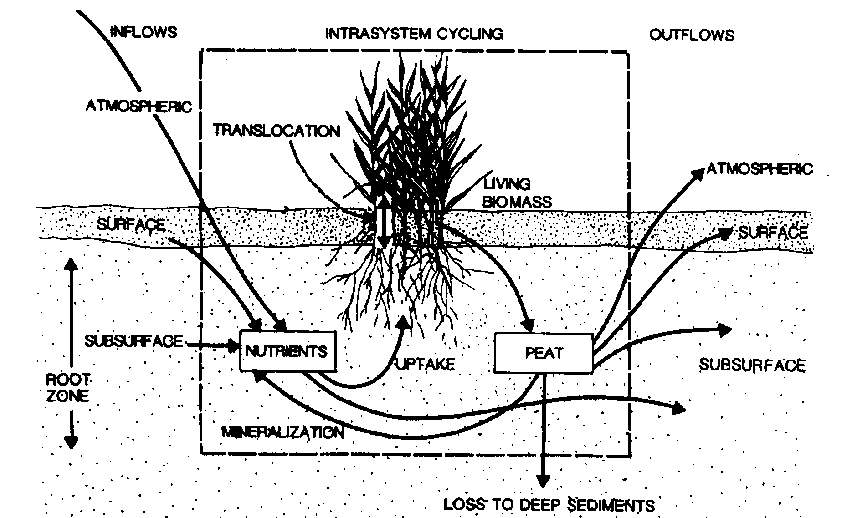Definitions of Wetland Functions
Main_Content
Wetlands are the result of a combination of physical characteristics which drive wetland processes. Wetland functions are the result of interactions between the three major components of wetland ecosystems: hydrology, biology, and soils. These interactions produce complex chemical reactions and the transfer of materials and energy which drive wetland processes. Wetland processes - such as transfer of oxygen or nutrients and weathering of soil or rock - determine the functions of wetlands.
The figure below illustrates the complex relationships between hydrologic and biologic processes of wetlands.

Differences in the three major components of wetland ecosystems define different wetland types. Thus, different types of wetlands have specific functions and these functions provide specific values to Marylanders.

The State of Maryland Nontidal Wetlands Protection Act of 1989 designates eight statutory wetland functions which are summarized below (DNR, 1995). The table below provides a brief description of these primary functions.
| Function |
Definition |
Ground Water Recharge
and Discharge |
the capacity of processes in a wetland to influence the amount of water and the rate at which it moves between the ground water system and the surface water system |
Stormwater
and
Flood Control |
the capacity of a wetland to store large volumes of water during floods; wetlands modify the flow in streams by decreasing peak discharge (volume of water over a given time) and increasing time of concentration (time between rainfall/flood event and release of water to streams) |
Improved Water Quality
Toxic Retention
Nutrient Removal
Transformation |
removal of suspended and dissolved solids and nutrients from surface and ground water and conversion into other forms, such as plant and animal biomass or gases |
Sediment Stabilization
and Retention |
the capacity of processes in a wetland to cause the deposition and retention of inorganic and organic sediments from the water column, primarily through physical processes |
Aquatic Diversity
and Habitat |
the capacity of a wetland to produce an abundance and diversity of hydrophytic plant species and communities, and aquatic habitats for animals |
Wildlife Diversity
and Habitat |
the capacity of a wetland to produce large and/or diverse populations of animal species and communities that spend part or all of their life cycle in wetlands |